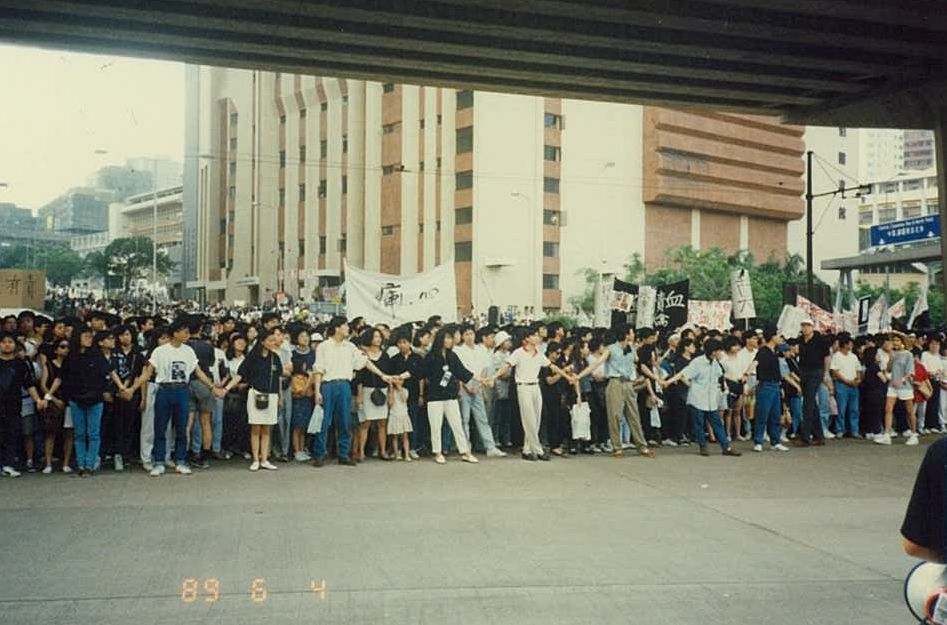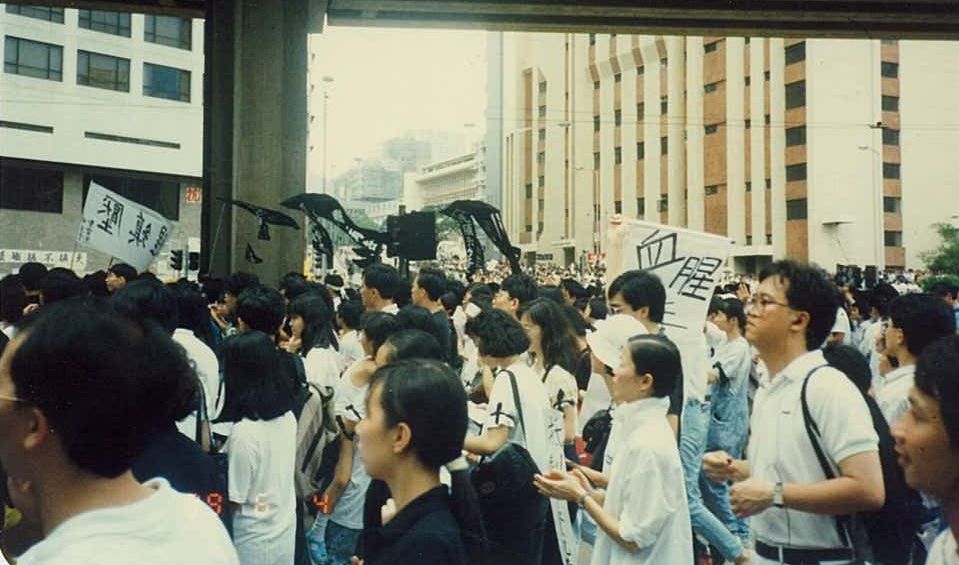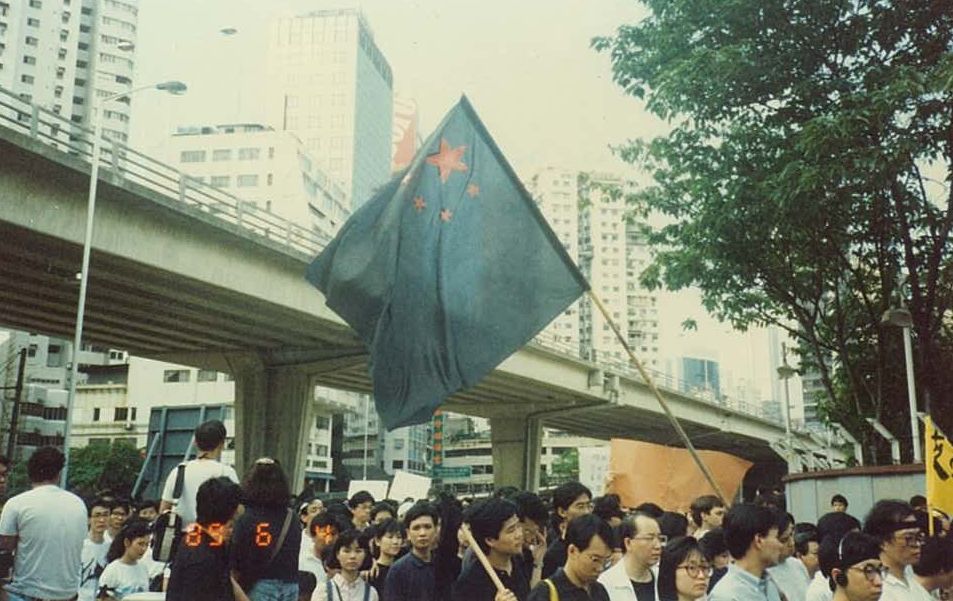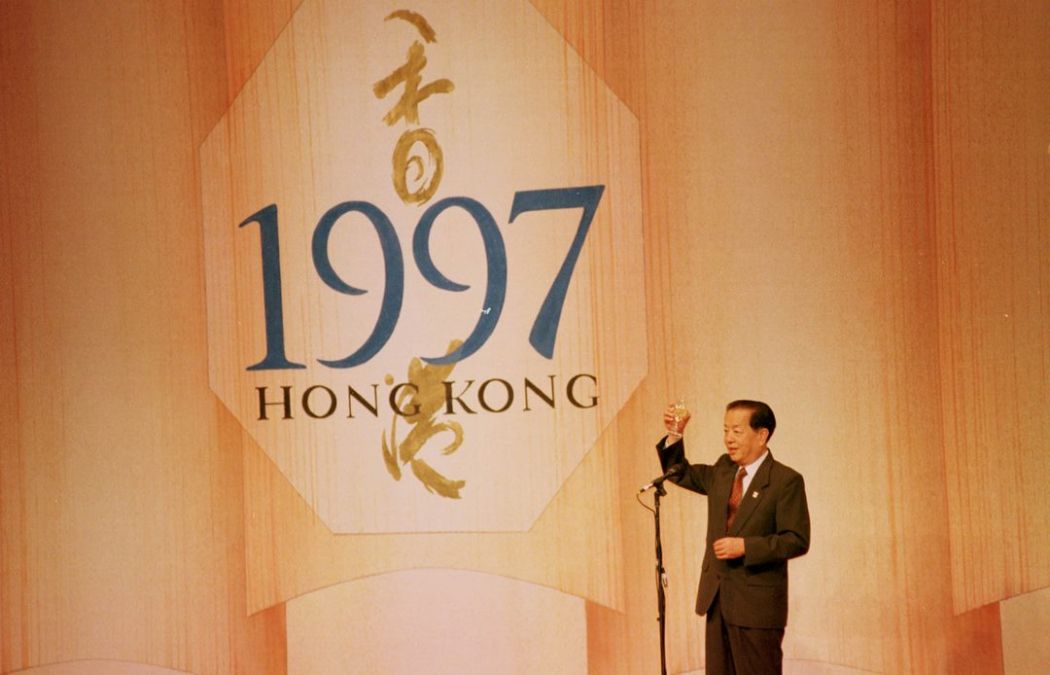Hong Kong 30 years ago: I was a humble minion sitting in close proximity to typewriters and telex machines at a venerable hong in Central. I shared an apartment with two friends in the Mid-Levels, for two or three thousand bucks each month.
Central was mostly walkable. I remember waiting to cross Chater Road, and not being too surprised to find richest-man-in-Asia Li Ka-shing standing serenely next to me. But everyone was petrified of setting foot in crime-ridden hell-hole Shenzhen.
Nepalese curry buffet on Saturday at the Godown. Causeway Bay had Matsuzakaya. Smoke-belching diesel taxis. The Star Ferry was a useful public transport option. Tourists were confined to Nathan Road. Sidewalk dentists in Mongkok. Kids doing homework on the floor in the arrivals hall at Kai Tak.
Nearly everyone I knew in Hong Kong around the end of April 1989 was increasingly absorbed with the students gathering in Tiananmen Square. We didn’t have much idea of who Hu Yaobang was, but there was a genuine mood of excitement. It seemed feasible – even logical – that the protestors and hunger-strikers in China could persuade the Communist Party to reform and liberalise.
Looking back, this was naive. And, especially, it was wishful thinking. Hong Kong had eight years to go before the handover. Negotiations between Britain and China were dragging, while Beijing pushed ahead with its own preparations, co-opting local elites and drafting a Basic Law.
Every month, another colleague left with family for Canada. Bosses and officials were worried about the brain-drain. Everyone needed to believe China was reforming.
Well-known local activists like Martin Lee and Szeto Wah voiced support for the pro-democracy movement, and younger ones went to Guangzhou and Beijing with money and supplies. Jimmy Lai’s Giordano produced pro-student T-shirts. Student leaders like Wang Dan and Wu’er Kaishi became household names.

Later in May, Chinese leaders declared martial law and began to stare down the students in Tiananmen. The exuberance faded. Right on cue, I got a brutal reality check in the mail when the Hong Kong Inland Revenue Department “fined” me an extra 10 per cent for late payment of the second instalment of my salaries tax – as if nothing had been happening up in China the last couple of months.
There were huge protest marches. On one, the crowd went from Central all the way into North Point before looping back towards Happy Valley, site of the Xinhua News Agency (precursor to China’s Liaison Office). The villain was Li Peng, whose piggy face creative protestors made full use of on placards.

At some point, on the evening of June 3, the no-frills local pub suddenly went quiet, and a normally raucous group of expat teenagers were standing and staring at the TV. Probably CNN. I don’t think it actually showed live footage – just a reporter on a phone line, or something. But it must have mentioned tanks and military units on the move.

By next morning, the news was full of reports of shootings and a massacre. This was before the internet, and reliable information, unverified accounts and hearsay unfolded over days.

Among other memories, the unlikeliest people were turning up at protests, including a parade of Hong Kong’s most senior bankers wearing suits. Many of today’s older-generation pro-establishment shoe-shiners denounced Beijing bitterly – they have since covered their tracks. Overt pro-CCP patriots, who were still on the fringes of society in those days, were among the most outraged.

Black ribbons on people’s arms and on taxis’ radio antennae. A huge black banner hanging from the (then still under construction) Bank of China building. People rushing to donate money and even blood. Huge lines outside foreign consulates.
Rumours of hundreds killed in Chengdu, or in Wuhan, or on a bridge somewhere. Rumours of tanks lined up in Shenzhen ready to cross the border into Hong Kong. Rumours of civil war.

Debates about faxes: should people in Hong Kong fax news clippings about what happened to random mainland numbers, or would innocent recipients get in trouble?
My flatmate’s mother dropped by and started talking about having to bow to Japanese soldiers in our street when she was a schoolgirl.
A little photocopying shop on Robinson Road filled its whole window with photos of the carnage. The pictures of bodies and bikes mangled together were horrifying and maybe unique – I’ve never seen many of them again.
Later on, rumours of round-ups and executions across China as the CCP hardliners reasserted control. Dissidents like astrophysicist Feng Lizhi and student leaders escaping to the West.
An aerial shot of a huge march made it into the official Hong Kong annual handbook that year. The Hong Kong government under Governor David Wilson openly commiserated – not least, perhaps for itself and the prospects for a calm countdown to an honourable exit in 1997.
The hong rushed out a message from a high-profile socially elite director to try to assure Hong Kong staff that all would surely be well.
In the months after, the colonial administration announced a morale-lifting infrastructure plan for a new airport. Chinese officials, apparently shocked that Hongkongers were not as patriotic as they had assumed, toughened the requirement for safeguards against subversion in the draft post-1997 constitution – which still awaits implementation today as Article 23.
As things settled, local CCP loyalists fell back into line, and international business got back to exploring mainland China opportunities. Beijing proxies proposed that what happened had been a counterrevolutionary uprising, and there had been no choice but to suppress it.

Some years later, the Beijing-friendly line was to credit the “incident” with averting chaos, thus enabling the stability without which China’s subsequent economic boom could never have materialised.
Today, Hong Kong’s pro-Beijing establishment try to become invisible or squirm in silence if the subject of June 4 comes up. Local CCP loyalists might be more daring and suggest that the story was all exaggerated by foreigners, the implication being that hardly anything happened at all – in line with contemporary official fiction-history.
But beneath the nationalistic bluster, the China model looks to be struggling. The current leadership is paranoid and backwards-looking. It would close the country off from the world, and drag Hong Kong with it, rather than reform and risk losing power.

Hong Kong’s pan-democracy camp is hopelessly disorganised and often obsessed with lost causes. But in refusing to forget Tiananmen, in never letting the Chinese Communist Party off the hook, it is gloriously relevant and right. Never more so than on this, the 30th anniversary. The reckoning is coming.
Kong Tsung-gan‘s new collection of essays – narrative, journalistic, documentary, analytical, polemical, and philosophical – trace the fast-paced, often bewildering developments in Hong Kong since the 2014 Umbrella Movement. As Long As There Is Resistance, There Is Hope is available exclusively through HKFP with a min. HK$200 donation. Thanks to the kindness of the author, 100 per cent of your payment will go to HKFP’s critical 2019 #PressForFreedom Funding Drive.

